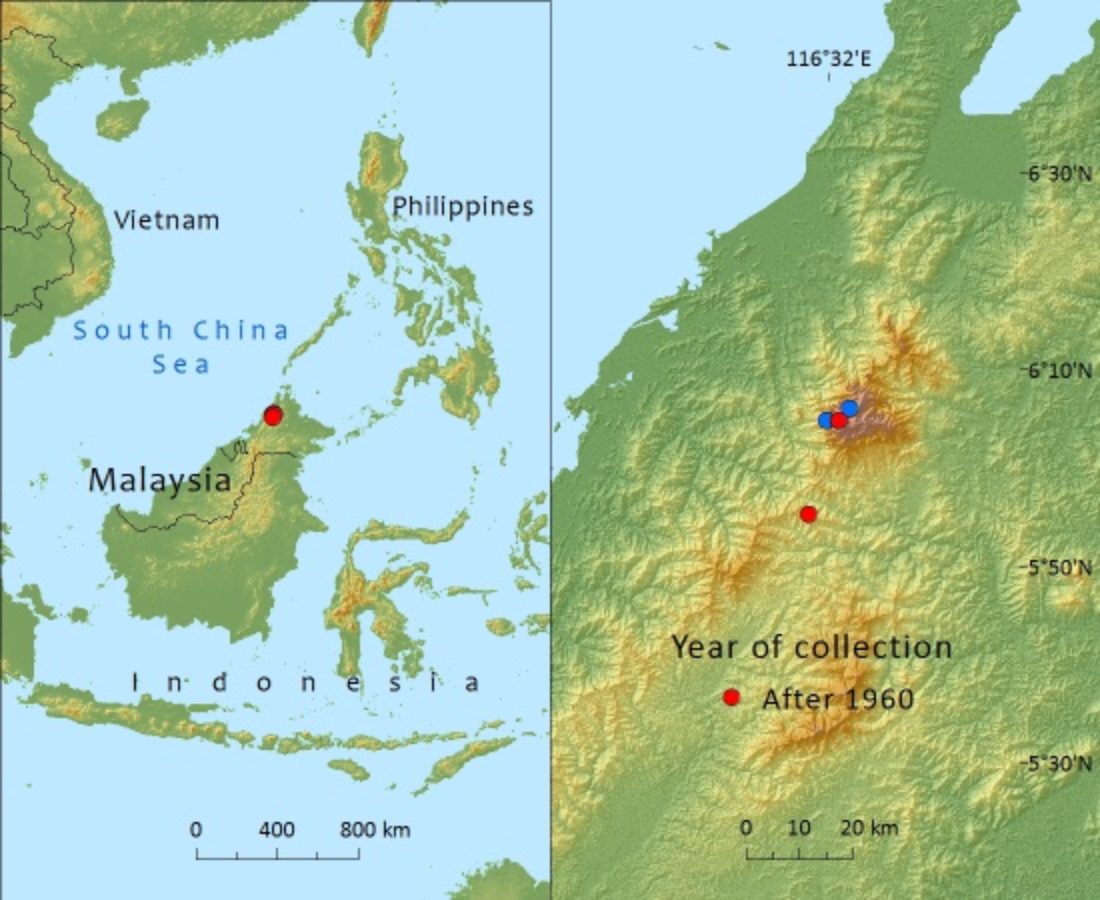Podocarpaceae
Podocarpus gibbsiae
Endemic to Mount Kinabalu in Sabah, Borneo where extreme droughts and tourism pose a potential fire hazzard.
References and further reading
- Beaman, R.S. & Beaman, J.H. (1993). The Gymnosperms of Mt Kinabalu. Contributions from the University of Michigan Herbarium 19: 307-341.
- de Laubenfels, D.J. (1988). Coniferales. Flora Malesiana series I - spermatophyta, flowering plants 10(3).
- Farjon, A. (2010). A Handbook of the World's Conifers. Koninklijke Brill, Leiden.
- Farjon, A. 2013. Podocarpus gibbsiae. The IUCN Red List of Threatened Species. Version 2015.2. <www.iucnredlist.org>. Downloaded on 07 September 2015
